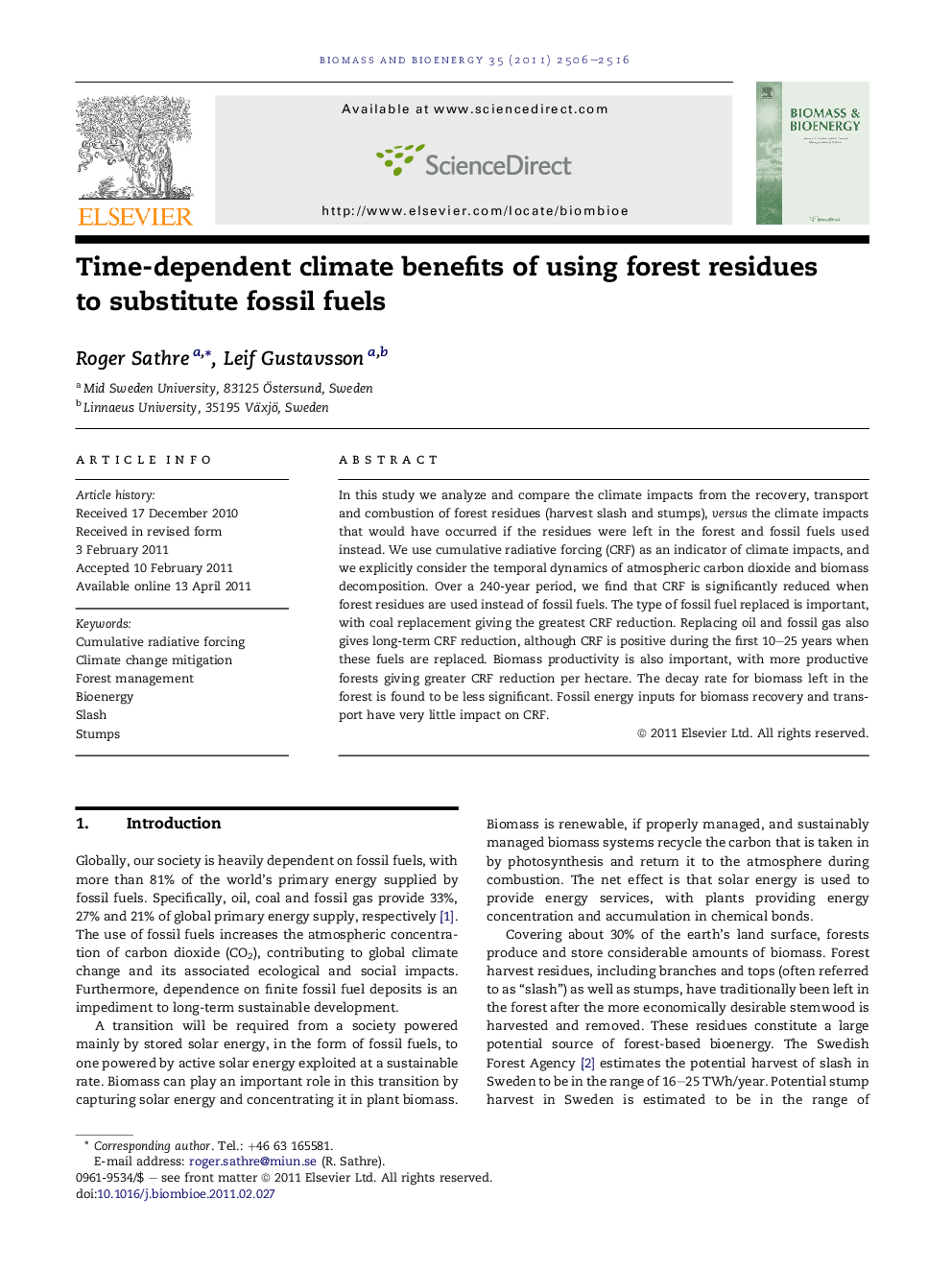| Article ID | Journal | Published Year | Pages | File Type |
|---|---|---|---|---|
| 677834 | Biomass and Bioenergy | 2011 | 11 Pages |
In this study we analyze and compare the climate impacts from the recovery, transport and combustion of forest residues (harvest slash and stumps), versus the climate impacts that would have occurred if the residues were left in the forest and fossil fuels used instead. We use cumulative radiative forcing (CRF) as an indicator of climate impacts, and we explicitly consider the temporal dynamics of atmospheric carbon dioxide and biomass decomposition. Over a 240-year period, we find that CRF is significantly reduced when forest residues are used instead of fossil fuels. The type of fossil fuel replaced is important, with coal replacement giving the greatest CRF reduction. Replacing oil and fossil gas also gives long-term CRF reduction, although CRF is positive during the first 10–25 years when these fuels are replaced. Biomass productivity is also important, with more productive forests giving greater CRF reduction per hectare. The decay rate for biomass left in the forest is found to be less significant. Fossil energy inputs for biomass recovery and transport have very little impact on CRF.
► Cumulative radiative forcing (CRF) can measure climate impacts of dynamic systems. ► Climate impact is reduced when forest slash and stumps are used to replace fossil fuels. ► Forest biofuels may cause short-term climate impact, followed by long-term climate benefit. ► Forest residues should replace coal to avoid short-term climate impact. ► Fossil energy used for biofuel recovery and transport has very little climate impact.
